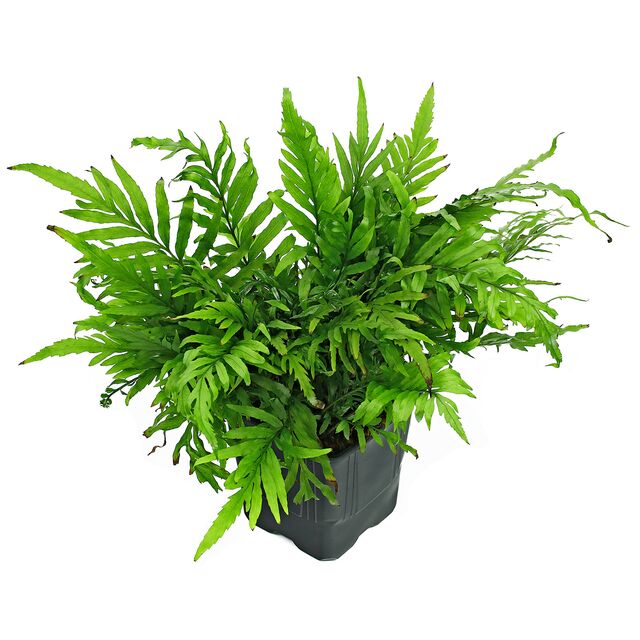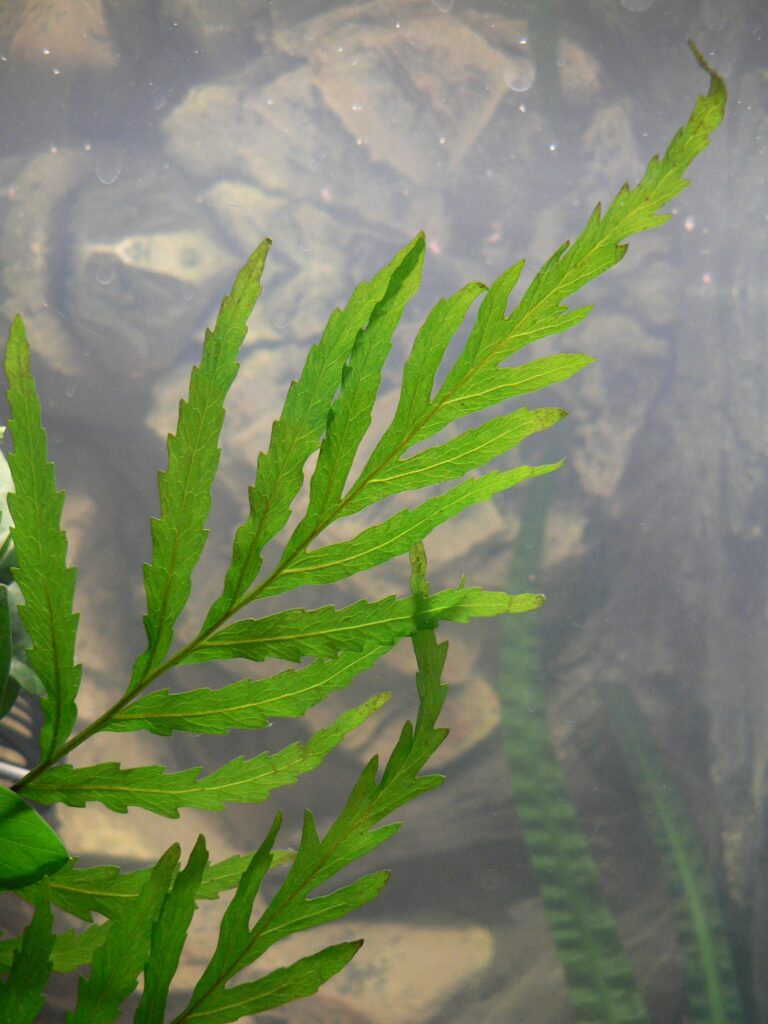The African Water Fern, Bolbitis heudelotii, is a popular aquatic plant among aquarium enthusiasts. It is native to the tropical regions of Africa, particularly in the Congo Basin and West Africa. This fern is a great addition to any aquarium due to its unique appearance, ease of care, and ability to help maintain good water quality. In this article, we will take an in-depth look at the African Water Fern and everything you need to know about caring for this fascinating plant.
Description of African Water Fern
Bolbitis heudelotii is a medium-sized aquatic fern that belongs to the family of Polypodiaceae. It can grow up to 50 cm in length and 15 cm in width. The leaves of the African Water Fern are a deep green color, and their texture is similar to that of leather. The leaves are also quite narrow, giving the plant a delicate appearance. The plant’s roots are thin, and they do not require a substrate to grow. Instead, they can attach themselves to rocks, driftwood, or other surfaces in the aquarium.
The African Water Fern is also known as “African fern” or “Bolbitis,” and it is commonly mistaken for Java Fern (Microsorum pteropus) due to their similarities in appearance. However, African Water Fern has a slightly different shape to its leaves, which have a more pointed tip compared to Java Fern.
Habitat and Distribution
The African Water Fern is indigenous to the tropical regions of Africa, mainly in the Congo Basin and West Africa. It grows in shallow, slow-moving rivers, streams, and swampy areas. In its natural habitat, the plant is usually found attached to rocks, logs, and other surfaces in the water.
Caring for African Water Fern
The African Water Fern is a relatively easy plant to care for, making it an excellent choice for beginners. It requires low to medium light and prefers slightly acidic to neutral water conditions. The optimal temperature for the African Water Fern is between 22°C to 28°C, and it thrives in soft to moderately hard water.
One of the most important aspects of caring for this plant is to ensure that its roots are attached to a solid surface. You can use a rock or a piece of driftwood to provide the plant with a sturdy anchor. The plant can be propagated by cutting the rhizome into smaller pieces and attaching them to new surfaces.
The African Water Fern is not a particularly fast-growing plant, and it may take some time to establish in your aquarium. However, once it has settled in, it will continue to grow steadily. It is important to note that the African Water Fern is not an oxygenator, and it does not produce oxygen during photosynthesis. Therefore, it is essential to provide adequate aeration and circulation in the aquarium to ensure that the plant thrives.
Benefits of African Water Fern in Aquariums
The African Water Fern offers several benefits to aquariums. Firstly, it helps to improve water quality by absorbing nitrates and other organic compounds from the water. This can help to reduce the levels of pollutants in the aquarium and maintain a healthy environment for fish and other aquatic creatures.
Secondly, the plant provides a natural hiding place for fish and other aquatic creatures. The dense leaves of the African Water Fern provide cover for fish to hide and play, reducing stress and increasing their overall well-being.
Finally, the African Water Fern adds a unique and attractive touch to the aquarium. Its delicate, deep green leaves and unusual shape make it an eye-catching addition to any aquarium.
Conclusion
The African Water Fern is a fascinating aquatic plant that offers many benefits to aquariums. Its unique appearance, ease of care, and ability to help maintain good water quality make it an excellent choice for beginners and experienced aquarium enthusiasts alike. The plant’s ability to absorb nitrates and other organic compounds from the water helps to reduce the levels of pollutants in the aquarium, creating a healthier environment for fish and other aquatic creatures.
In addition to its benefits, the African Water Fern is also a popular choice for aquascaping. Its narrow leaves and delicate appearance can create a stunning and natural-looking underwater landscape. The plant can be used as a focal point or as a background plant, depending on the aquarium’s size and design.







![]()
